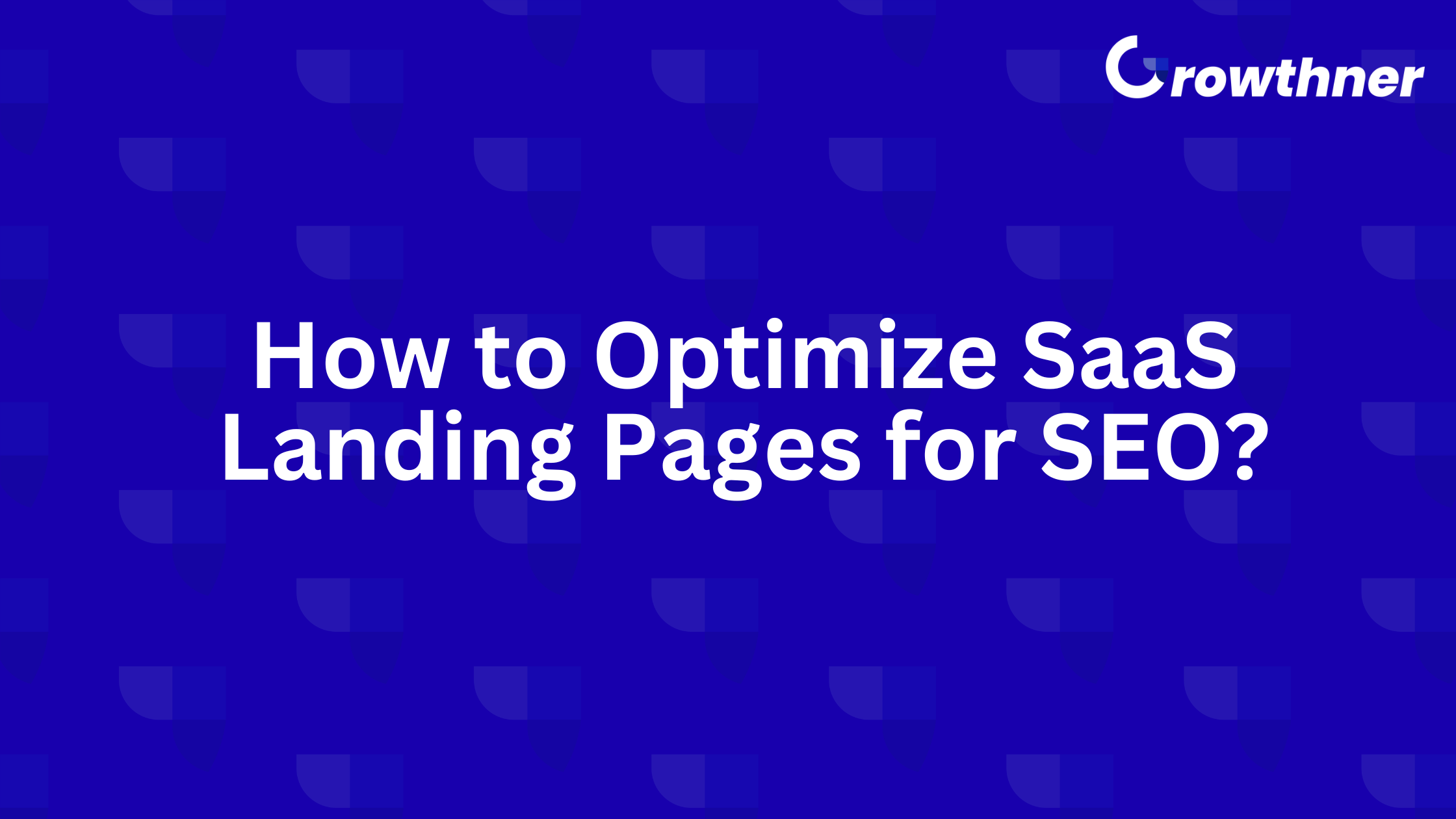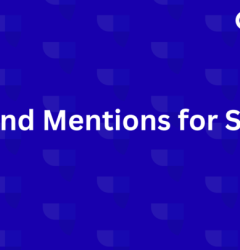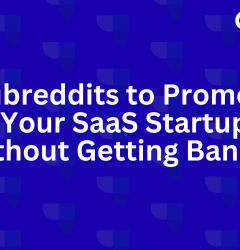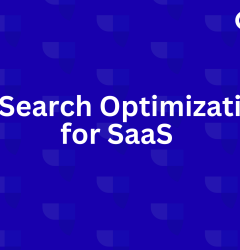Published by: Amit Kakkar
Published on: September 5, 2025
Last updated on: November 8, 2025
Last Updated on November 8, 2025 by admin

Key Takeaways: Optimizing SaaS Landing Pages for SEO
-
Your landing page must balance SEO visibility + conversion focus — getting traffic is useless unless those visitors act.
-
Use relevant keywords naturally in title tags, headers, meta descriptions, body copy — but don’t spam or stuff.
-
Structure content clearly:
-
Use heading tags (H1, H2…) to organize content.
-
Include semantic HTML and clear sections.
-
Add FAQ sections to target question-based queries.
-
Improve page speed and performance:
-
Ensure mobile-friendliness — pages must render well and load fast on mobile devices.
-
Use internal linking to and from relevant pages to pass authority and help search engines crawl.
-
Add structured data / schema markup (e.g. product, pricing) so search engines can surface rich snippets.
-
Include trust signals / social proof:
-
Keep the user experience simple and frictionless:
-
Clear, benefit-oriented headlines.
-
Short forms (ask minimal required fields).
-
CTAs above the fold and repeated.
-
Avoid distracting navigation or links away from your goal.
-
Use A/B testing and analytics:
-
Track CTRs, bounce rate, time on page, conversion rate.
-
Test different headlines, CTAs, layouts.
-
Use heatmaps to see where users drop off.
-
Audit and continuously optimize:
-
Revisit content, keyword performance, page speed.
-
Update for changing search trends.
-
Monitor metrics and iterate.
If you run a SaaS business, your landing pages are more than just digital brochures. They are the pages where potential users decide whether to sign up for a free trial, book a demo, or move on to your competitor. That means they need to do two things exceptionally well: convert visitors and rank in search engines. To achieve this, you need to know how to optimize SaaS landing pages for SEO without sacrificing conversions.
Unlike typical blog content, SaaS landing pages sit at the intersection of marketing, UX, and search. They carry the dual responsibility of educating users while persuading them to take action. In this article, we’ll walk through practical strategies that SaaS marketers can apply to build landing pages that rank higher, load faster, and generate sign-ups consistently.
Why SaaS Landing Pages Need a Different SEO Approach?
Optimizing SaaS landing pages for SEO is not as simple as following a generic checklist. These pages are uniquely positioned in the buyer’s journey. They often serve bottom-of-funnel purposes, such as capturing trial sign-ups, showcasing product features, or comparing your software with competitors.
Here are some key reasons why they need a tailored approach :
- Dual goals : Unlike blog posts, landing pages need to drive conversions while satisfying SEO requirements.
- High intent : Visitors landing here are closer to making a buying decision. If the page fails to rank or fails to persuade, you lose pipeline opportunities.
- Message balance : Overloading a landing page with keywords can kill conversion rates, while ignoring SEO leaves the page invisible in organic search.
A SaaS landing page must therefore be built with both humans and search engines in mind. If you are stuck with your SaaS website, hiring a SaaS SEO agency can help you with your overall content, SEO, and digital marketing efforts.
7 Ways To Rank Your SaaS Landing Pages
1. Research Before You Write — Keywords, Intent, and Funnel Fit
Start with Funnel Mapping
Not all landing pages serve the same purpose. Some educate, some compare, and some close the deal. Before you optimize a SaaS landing page, clarify which stage of the funnel it belongs to :
- TOFU (Top of Funnel) : Informational landing pages, like “What is project management software?” These bring awareness traffic.
- MOFU (Middle of Funnel) : Comparison and alternative pages, like “Asana vs Trello” or “Best alternatives to HubSpot.” These attract users actively researching solutions.
- BOFU (Bottom of Funnel) : High-intent product pages, such as “Project management software pricing” or “[Brand] demo request.” These push users to convert.
Mapping your landing pages to funnel stages ensures you target the right queries with the right intent.
Target the Right Keywords
Generic keywords like “CRM software” or “best cloud storage” are highly competitive and often vague. SaaS landing pages perform better when optimized for high-intent, conversion-focused queries.
Examples include :
- “[Product] pricing”
- “[Brand] demo”
- “[Tool] alternatives”
- “[Brand] vs [Competitor]”
These keywords may have lower search volume, but they bring in qualified traffic that’s more likely to convert.
Analyze Search Intent
Search engines are intent-driven. A page ranking for “best team collaboration software” needs to look very different from a page ranking for “[Brand] free trial.”
To analyze intent :
- Review the top-ranking competitors for your target query.
- Study People Also Ask and Related Searches for context.
- Use tools like Semrush or Ahrefs to find semantically related terms (e.g., “team collaboration features,” “remote team tools”).
Aligning your page structure and copy with intent increases both rankings and conversions. This research will also help you draft the right content strategy to optimize your SaaS website for AI search engines.
2. On-Page SEO Essentials for SaaS Landing Pages
Your meta title is the first impression. For SaaS landing pages, clarity beats cleverness.
For example :
- Title : Best Project Management Software [Free Trial Available]
- Description : Discover feature-rich project management software trusted by 10,000+ teams. Compare pricing, explore features, and start your free trial today.
This approach includes the keyword, signals value, and speaks directly to the user’s intent.
Headings Structure
Use one clear H1 with your primary keyword. Break down supporting sections with H2s and H3s that highlight product benefits, comparisons, or FAQs.
Example for a pricing page :
- H1: Project Management Software Pricing
- H2: Flexible Plans for Every Team
- H3: Compare Features Across Plans
URL Best Practices
Short, clean, and descriptive URLs improve both SEO and usability.
- ✅ /pricing
- ✅ /alternatives/slack
3. Content That Balances SEO and Conversions
Craft Copy That Speaks to Humans and Crawlers
Good landing page copy places the keyword naturally within the first 100 words, then focuses on user value. Don’t write for robots—write for people who are seconds away from making a decision.
Instead of: “Our project management software optimizes task assignment for scalable workflows.”
Say: “Manage your projects with ease. From assigning tasks to tracking progress, our software keeps your team aligned and productive.”
The difference? One is stuffed with jargon, the other is clear and persuasive.
Writing humanly and offering value to your users from your content also helps you get cited in ChatGPT, Perplexity, Gemini, and other AI search tools.
Include Social Proof
Case studies, testimonials, and recognizable client logos are gold for SaaS landing pages. They not only improve conversion rates but also extend dwell time—two indirect SEO signals.
Build for Scannability
Busy SaaS buyers don’t read every word. Break up text with bullet points, benefit-driven subheads, and visuals. Make the value of your product obvious at a glance.
4. Technical SEO and UX Factors That Impact Rankings
Page Speed & Core Web Vitals
A slow landing page is a conversion killer. Use tools like Google PageSpeed Insights to optimize :
- Compress and lazy-load images
- Minify CSS and JS files
Mobile-First Design
More decision-makers research SaaS products on mobile than ever. Your design must adapt seamlessly to smaller screens without losing clarity.
Structured Data
Add structured data like FAQ schema, review schema, or product schema. These not only improve visibility in SERPs but also enhance CTR.
5. Internal Linking and Topical Authority
Use a Topical Map for SaaS
One landing page can’t rank alone. Supporting content clusters strengthen authority. For example:
- Core page: /project-management-software
- Supporting content: blog posts on “project management best practices,” “remote collaboration challenges,” “Agile team workflows.”
These interlinking pieces create semantic depth that search engines reward.
Strategic Internal Links
Always link from high-traffic blogs to your key landing pages with descriptive anchor text. Example: “Explore our project management software pricing”.
External References
Linking out to reputable research (e.g., Gartner reports, industry benchmarks) builds credibility and signals topical depth.
6. Optimizing Visual and Interactive Elements
Images and Alt Text
Every image should have descriptive alt text that ties to the page theme. Example: “Project management dashboard interface screenshot.”
Video and Interactive Demos
Embedding product walkthroughs or interactive demos increases engagement time, helping both SEO and conversions.
7. Tracking, Testing, and Iterating
Set Up Proper Tracking
Implement Google Analytics 4, Google Search Console, and session recording tools like Hotjar. These help you monitor not just rankings but actual user behavior.
A/B Test SEO vs CRO Tradeoffs
Sometimes, a headline that ranks isn’t the one that converts best. Run A/B tests to balance keyword relevance with conversion-focused messaging.
Refresh Content Regularly
Search intent evolves. Revisit your landing pages every quarter to :
- Update screenshots and feature lists
- Add fresh testimonials
- Rework copy if competitors start outranking you
8. Link-Building & Authority for SaaS Pages
Landing pages can’t thrive on on-page SEO alone. To truly rank high, they need authority signals—mainly quality backlinks. In the SaaS space, this is less about quantity and more about earning contextual, high-value links that reinforce trust.
- Leverage case studies and reports : Original data is link-worthy. Publish research, industry benchmarks, or customer success stories that others will reference.
- Partnerships and integrations : Collaborate with complementary SaaS tools. Co-marketing campaigns or integration pages often attract backlinks from both partner sites.
- Guest posting : Share thought leadership on SaaS-focused blogs, tech websites, or industry publications. Naturally link back to your landing page within valuable content.
- Internal linking strategy : Don’t overlook your own ecosystem. Point traffic from high-performing blog posts or resource hubs to your landing pages to pass authority.
Building authority takes time, but for SaaS landing pages it’s a sustainable growth lever. The more trusted sites link to your page, the higher your chances of ranking for competitive, high-intent keywords.
Common Mistakes to Avoid
Even well-designed SaaS landing pages can underperform if SEO basics are overlooked. Here are the most frequent pitfalls to watch out for :
- Stuffing landing pages with repetitive keywords
- Using generic copy that doesn’t highlight unique value
- Ignoring search intent and trying to rank the same page for every stage of the funnel
- Overloading with animations and scripts that slow down load time
- Neglecting mobile optimization
- Duplicate or thin content
Final Thoughts
To optimize SaaS landing pages for SEO, think beyond keywords. Each page needs to serve a dual purpose: ranking well in search engines and converting visitors into users. That means aligning with search intent, structuring your content for both clarity and persuasion, tightening your technical SEO, and continuously testing and refining.
Start small. Pick one high-intent landing page like your pricing or demo request page and apply the strategies outlined here. Monitor results, iterate, and scale. Over time, this process will transform your landing pages into conversion-driven SEO assets that fuel long-term SaaS growth.
FAQs
1. How do you balance SEO and conversions on SaaS landing pages?
Prioritize clarity and user experience. Place keywords strategically, but let benefits and CTAs guide the copy.
2. Should you use long-form content on SaaS landing pages?
Yes, but only when it aligns with intent. Comparison and feature pages often perform better with more detail, while pricing pages should stay concise.
3. What’s the role of comparison pages (e.g., X vs Y) in SaaS SEO?
They capture high-intent searches from buyers evaluating alternatives and can be among your best-converting landing pages.
4. How often should SaaS landing pages be updated for SEO?
Every 3–6 months or whenever product features, pricing, or competitor messaging changes.
About the Author
Amit Kakkar
Amit is a SaaS SEO expert and founder of Growthner, helping SaaS companies grow through data-driven strategies. With a hands-on approach, Amit works closely with businesses to boost their online presence and drive results. If you have any questions you can ask him on X or Linkedin








Amit Kakkar